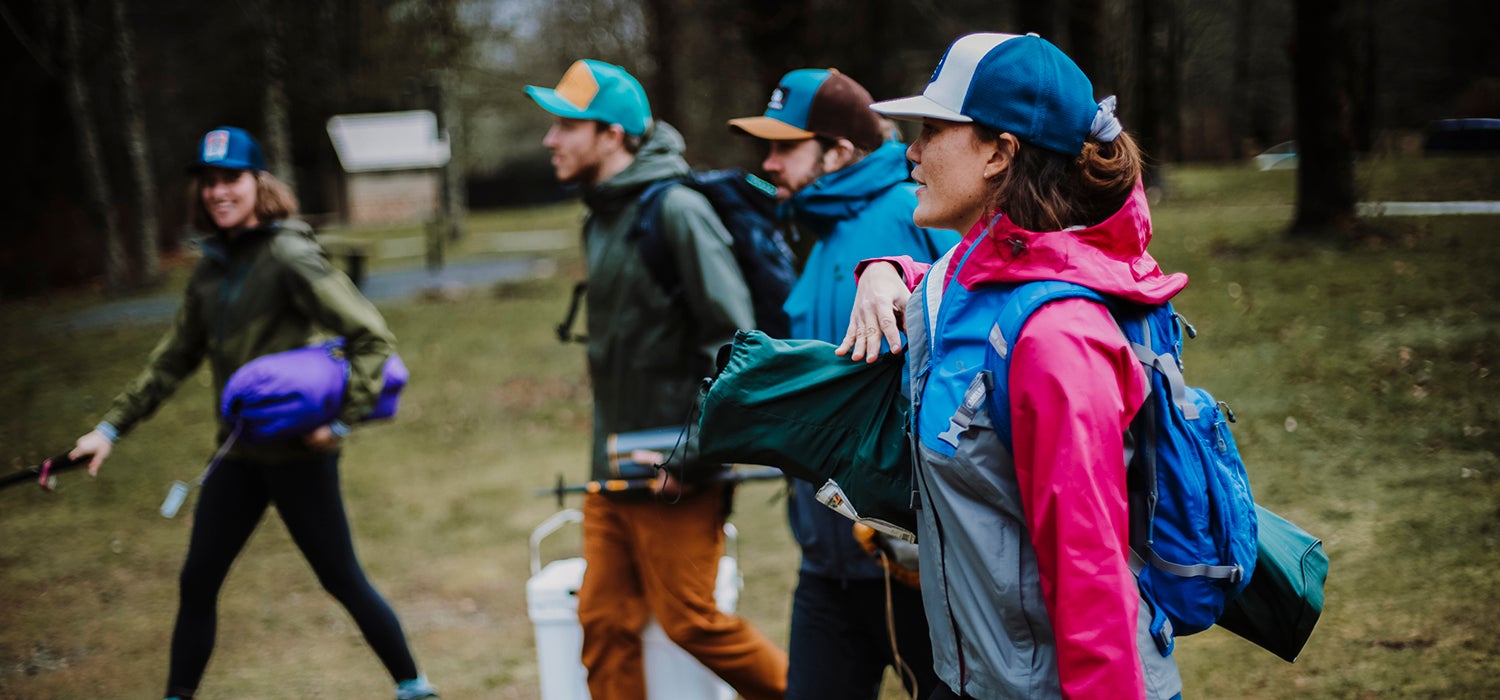10 Pro Tips for Camping in the Rain

Elise Giordano, Heather Gregory, Jason Wert, Pat Maher, Rattlesnake Lake, S19, Sara Nazim, Spring 2019, rain, weather, wet
You’ve asked the days off work. You’ve (finally) gotten your buddies to agree to a date. You have a trail picked out. And, at the last minute, the forecast turns against you.
Don’t let a little rain ruin your trip. Instead, utilize these 10 tips to stay warm and dry the whole time.
1) Bring all the extras.
A big part of staying dry is being vigilant about all the little ways water can seep into your clothes and gear. Use gaiters (and rain pants) to keep trickles out of your boots, and a baseball cap to keep droplets from sneaking down your collar.
Sure, extra gear means extra weight, but guess what weighs more than all that stuff? Being soaking wet.
2) Don’t skimp on the gear prep.
In horrid weather, your gear is all that stands between you and total misery. Before your trip, seal your tent seams (try Gear Aid’s Seam Grip), and check the rain fly for holes, wear points, and broken guyline attachments.
If your rain shell is old, give it a wash (dirt can clog the pores of the waterproof membrane, inhibiting breathability), and re-up on the external water repellant treatment with something like NikWax TX.Direct.
Ditto for your boots. Even if they’re labeled as waterproof, the leather and fabric can take on moisture if the external water-repellant coating has worn away. Reseal yearly.
3) Pack smart.
Your pack’s rain cover is just one line of defense. Protect your gear from puddles and sideways gusts by lining your pack with a plastic bag, or stuffing your sleeping bag, clothes, and other essentials in drybags. Bonus: Now you can remove your pack cover and fish around for snacks without soaking the rest of your gear.
Pre-rig your guylines before packing your tent. Then, stuff first the rainfly, then the tent body, then the footprint. That speeds up the pitching process, and minimizes the time your tent floor spends exposed.
4) Keep layers to a minimum.
Outdoors, there are two sources of moisture: the rain, and your sweat. Stay dry by stripping layers before you start hiking. That can mean a T-shirt under your shell, or shorts under your rain pants.
Also, steer clear of cotton, which saps warmth when wet and takes forever to dry. Instead, opt for quick-dry synthetics or lightweight wool.
5) Wear the right jacket.
In areas with dry climates and brief downpours, you can often get away with a water-repellant softshell jacket. Softshell maximizes breathability, making you less likely to sweat through your baselayers.
But if you expect cooler temps or relentless rain, you’ll need a hardshell jacket, or one with a built-in, waterproof membrane. Hardshell is generally less breathable than softshell, but good venting (hello, pit zips) and newer fabric technologies do a lot to bridge that gap. One example: Outdoor Research’s Interstellar jacket, which uses an air-permeable electrospun waterproof membrane for a big boost in breathability.
6) Mind your form.
While hiking, keep your arms down to avoid water from trickling down your sleeves, and tuck your chin so water drips off the brim of your hat or cap rather than into the neck of your shirt.
7) Dress to impress.
This is a small thing, but it makes a big difference: Tuck the hems and cuffs of your baselayer inside your shell. Otherwise, water will wick up into the fabric over time.
8) Pick the right campsite.
Find a spot that drains well. Staying out of gullies, depressions, and soft soil, where water tends to pool. Pick a site under trees, or on the leeward side of boulders to defend against wind-blown rain.
9) Batten down the hatches.
Set up your tent so that the panel with the smallest surface area (usually the tent’s back end) faces into the wind. This will limit pummeling during the night.
Use guylines to keep your rainfly taut and extended beyond the lip of the tent’s bathtub floor. Finally, tuck the edges of your tarp or footprint under the tent floor to keep them from funneling water under you.
10) Build a camp kitchen.
Bad weather doesn’t have to keep you tent-bound. Pack a lightweight cook tent, or string up a tarp to create a protected zone for cooking, eating dinner, and finally winning that ongoing spades tournament.